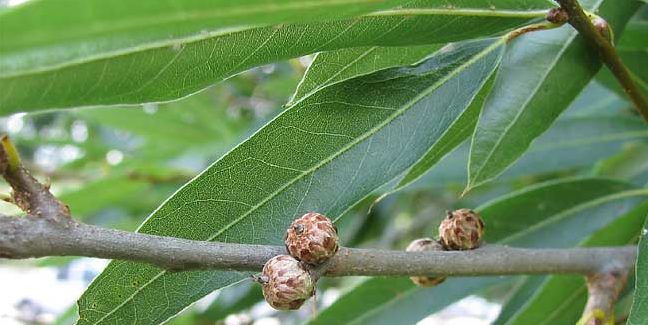
Thomas Jefferson is known for many things, but did you know that he loved the willow oak as well? Reportedly, Quercus phellos was the favorite tree of the third President of the United States, and it is easy to see why.
The willow oak is a strong and beautiful tree that shares similarities with other oaks but is unique in many other ways that make it such an attractive tree to behold. The most significant particularity of the willow oak is the shape of its leaves, which are narrow and slender and very similar to that of the willow tree. The leaves have a glossy, lustrous finish on top and can be 2 to 5 inches long. They are not serrated and end with a hair-like tip at the end to help rainwater drain better.
Although extensively planted in the southern part of the United States, the native range of the willow oak stretches along almost half of the U.S.; from New York south to Florida and from the east coast west to Oklahoma. The strength of the willow oak can be seen by its majestic size and its rapid rate of growth as although it can typically grow to around 60 feet in height, in optimal conditions it can grow to and incredible 100 feet. Quercus phellos is especially treasured due to its ability to tolerate harsh urban environments and this has led the willow oak to be a common street tree along many U.S. cities including Washington D.C. The willow oak grows comfortably in this toxic environment and helps to clean and clear the air while its aesthetic qualities bring joy to many a motorist, pedestrian, and resident. For all of those reasons, the willow oak is eligible for the full $100 rebate when you plant one in your yard.

Not only is the willow oak a proud and stately urban tree, but it is a generous tree as well. After 15 years of growth the willow oak drops its first acorns and goes on to become one of the most prolific producers of acorns that nourish all types of forest wildlife. Its bark is thick, dark, and shallowly furrowed and its twigs are slender and of a reddish-brown color. In fall, the leaves turn to a pale yellow color that complements nicely the red, brown and orange fall colors that can be seen around Washington D.C.
In its natural habitat the willow oak can be found in lowland floodplains and along streams at altitudes up to 1312 feet. The general good health of Quercus phellos is possible because of the fact that it is relatively pest free and has no serious diseases that affect it, which certainly saves both city tree maintenance crews and homeowners lots of trouble! In Washington D.C. you can find the willow oak growing on Rhode Island Avenue, near the Capitol Grounds and in the Kenilworth Aquatic Gardens.

